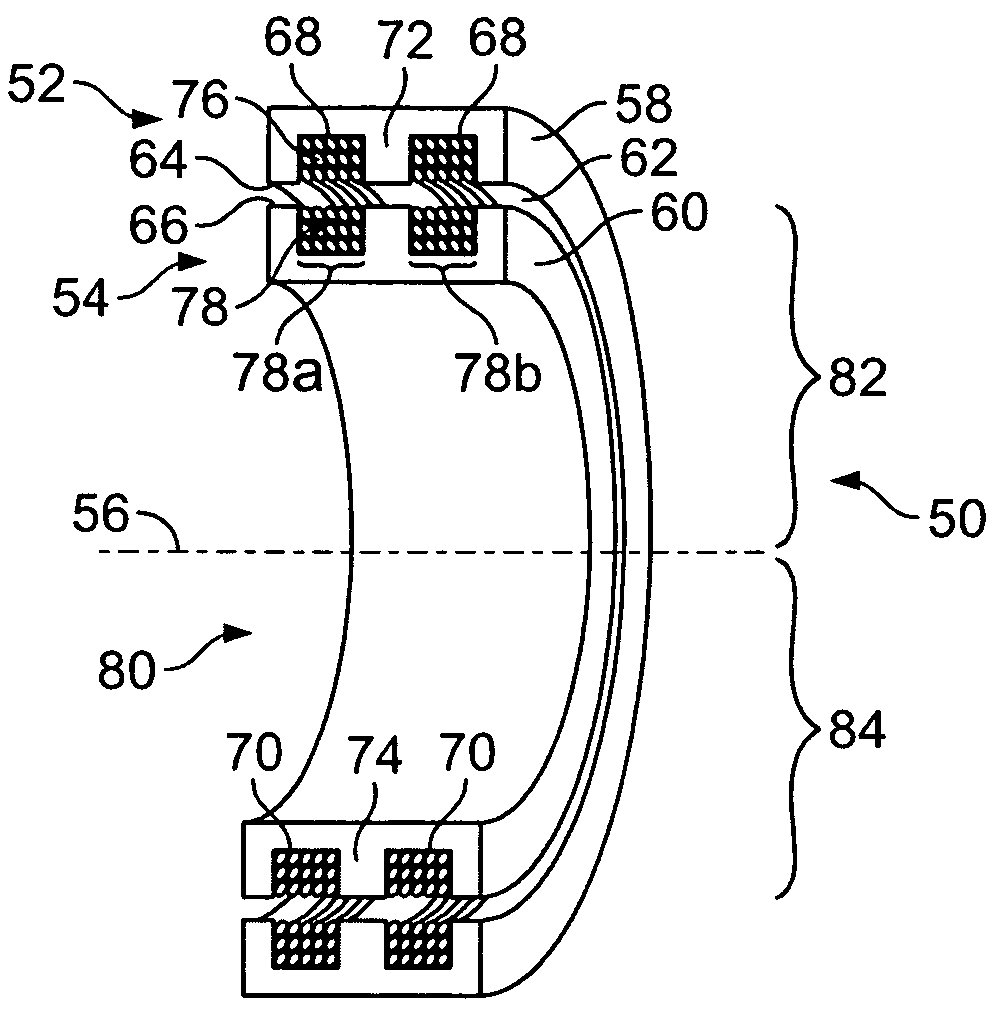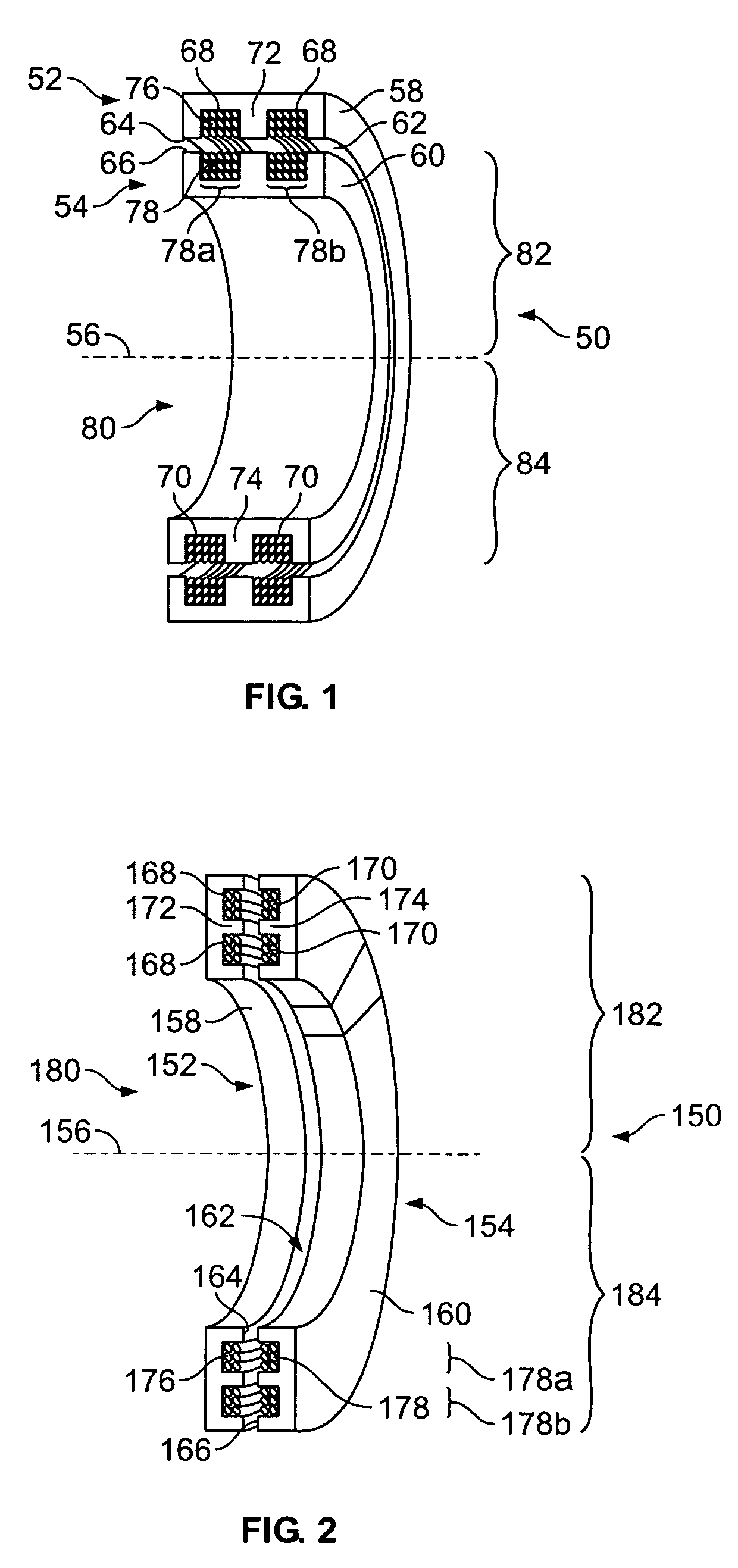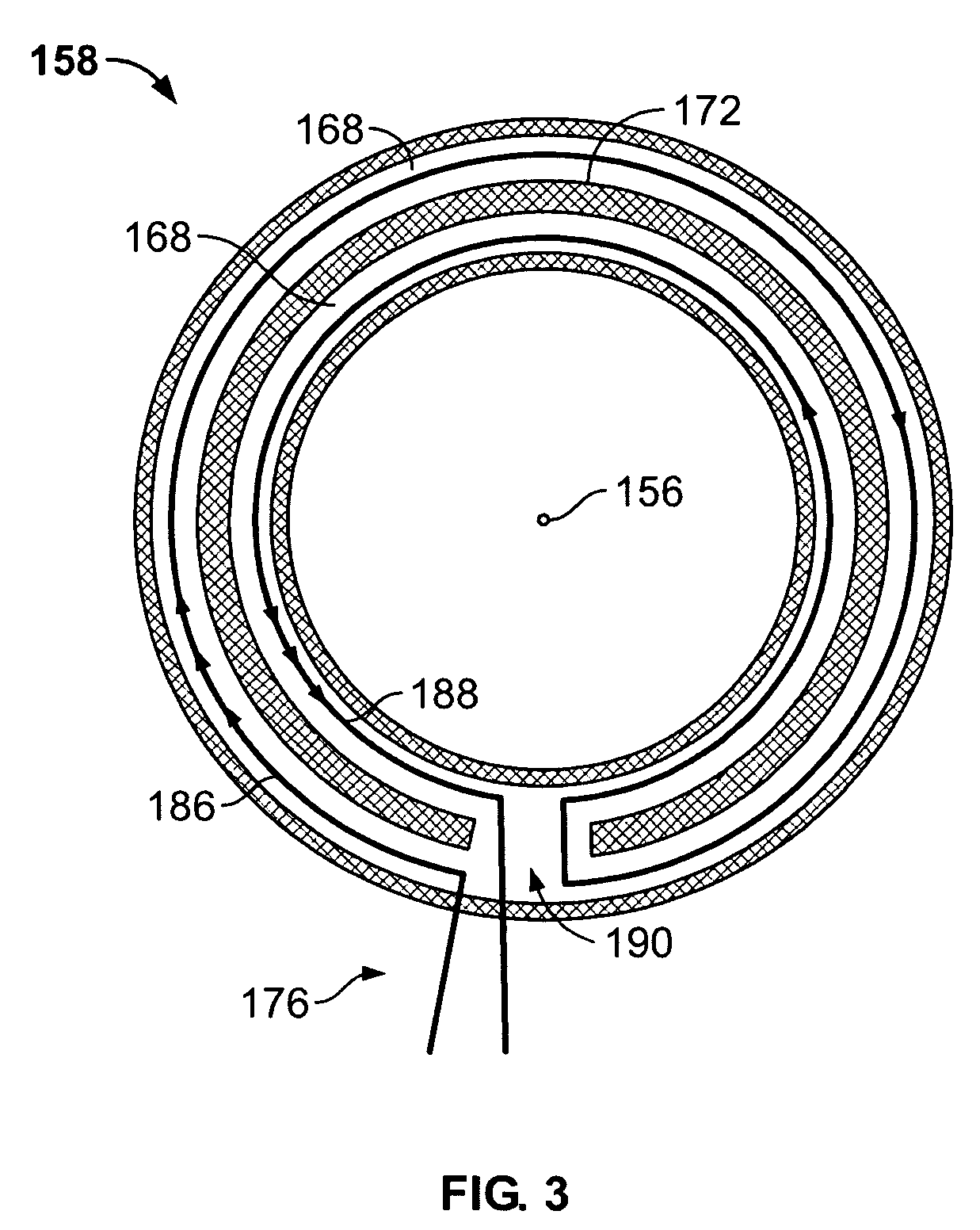Contactless power transfer system
a power transfer system and contactless technology, applied in tomography, instruments, nuclear engineering, etc., can solve the problems of brush and slip ring mechanism, increase the weight, volume and complexity of the system, and certain disadvantages of the rotating gantry based scanner system
- Summary
- Abstract
- Description
- Claims
- Application Information
AI Technical Summary
Benefits of technology
Problems solved by technology
Method used
Image
Examples
Embodiment Construction
[0023]The terms “low-voltage” and “high-voltage” as used throughout are not intended to represent absolute valves, but instead are intended merely to indicate a relative relation to one another.
[0024]FIG. 1 illustrates a contactless power transfer system 50 formed in accordance with an embodiment of the present invention. The system 50 includes a stationary member 52 and a rotating member 54 located proximate one another and in a concentric arrangement about axis 56. The rotating member 54 rotates about axis 56 relative to the stationary member 52. By way of example, the stationary member 52 may simply represent a stator, while the rotating member 54 may represent a rotor, both of which may be coupled to a common framework, such as a gantry (e.g., see FIGS. 10 and 12). The stationary member 52 has a stationary core 58, while the rotating member 54 has a rotating core 60. The stationary and rotating cores 58 and 60 have corresponding inner and outer surfaces 64 and 66, respectively. ...
PUM
 Login to View More
Login to View More Abstract
Description
Claims
Application Information
 Login to View More
Login to View More - R&D
- Intellectual Property
- Life Sciences
- Materials
- Tech Scout
- Unparalleled Data Quality
- Higher Quality Content
- 60% Fewer Hallucinations
Browse by: Latest US Patents, China's latest patents, Technical Efficacy Thesaurus, Application Domain, Technology Topic, Popular Technical Reports.
© 2025 PatSnap. All rights reserved.Legal|Privacy policy|Modern Slavery Act Transparency Statement|Sitemap|About US| Contact US: help@patsnap.com



